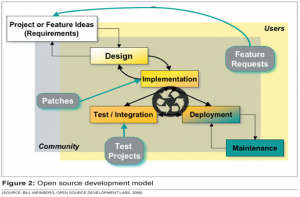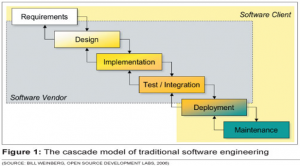Linux And Ibm Case Study Solution
Risks associated with OSS
The community although has some disadvantages too. Revenue models of companies will be affected by the open source code.Appearance of more enterprises who can build similar products using the source code is possible.Support advantage in the community is minimal. If the problem appears to be smaller, free support is easily available, but if the problem is thorny with no possible solution, then finding a paid top tier expert for open source is difficult. They are also slightly complex when compared to propriety software, which are developed for unskilled end user.(Optimus Information Inc., 2015)
Barriers in successful relationship
The fact that presence of skilled experts is minimal for problems in code may hinder in the way to approach this community. Propriety software offer skilled staff who can make the desired changes whenever an issue occurs. Apart from that, tighter restrictions are applied to software license of Linux when compared to apache. Moreover, Linus Torvalds, exercised direct controlsover Linux, as he was a powerful figure. Coming to an understanding with him might need proper planning.
IBM approach to LINUX
IBM needs to make a proper plan for approaching Linux since it’s a well-established name. Firstly A proper introduction pitch of the company has to be prepared, along with its finances. This pitch would be presented to Linux executives so they can know the company in a glance.
Secondly, a list of requirements from Linux have to be prepared by IBM. Each point must be thoroughly researched before going for a collaboration. This would avoid any confusions for future. Thirdly, notes have to be made on the requirements that Linux can full fill.
Finally, an agreement has to be reached that benefits both mutually. Communication has to be clear and honest, with no hidden motives. Promises made prior to the deal must be kept, and any request made by the counter party has to be respected for a healthy relationship.
Changes adopted after collaboration
Strategies or practices for IBM would not change to an extent that problems would be faced. Some of the recommended practices would include:
Increase Team communication: Since changes in OSS are to be posted on platforms and forums, or informed through mailing lists and chat software, team communication has to be excellent.
End-user feedback: User feedback has to be involved back in order to make source code bug free.
Peer review: A pleasant environment has to be developed that encourages peer review, and feedback and suggestion are welcomed.
Release often and early: This practice of development needs to be incorporated so bugs can be fixed quickly. As soon as the model is released, its source code can be viewed by millions. This would help finding the bugs quicker.
Transparency: Source code will be open to review and feed backs, bug tracking database, code tree and mailing lists will be visible to whole company.
Good code designs: Practice of building minimal code base has to be adopted. Other functionalities have to be added as separate modules for easier testing and reuse.(Haddad, 2008)














